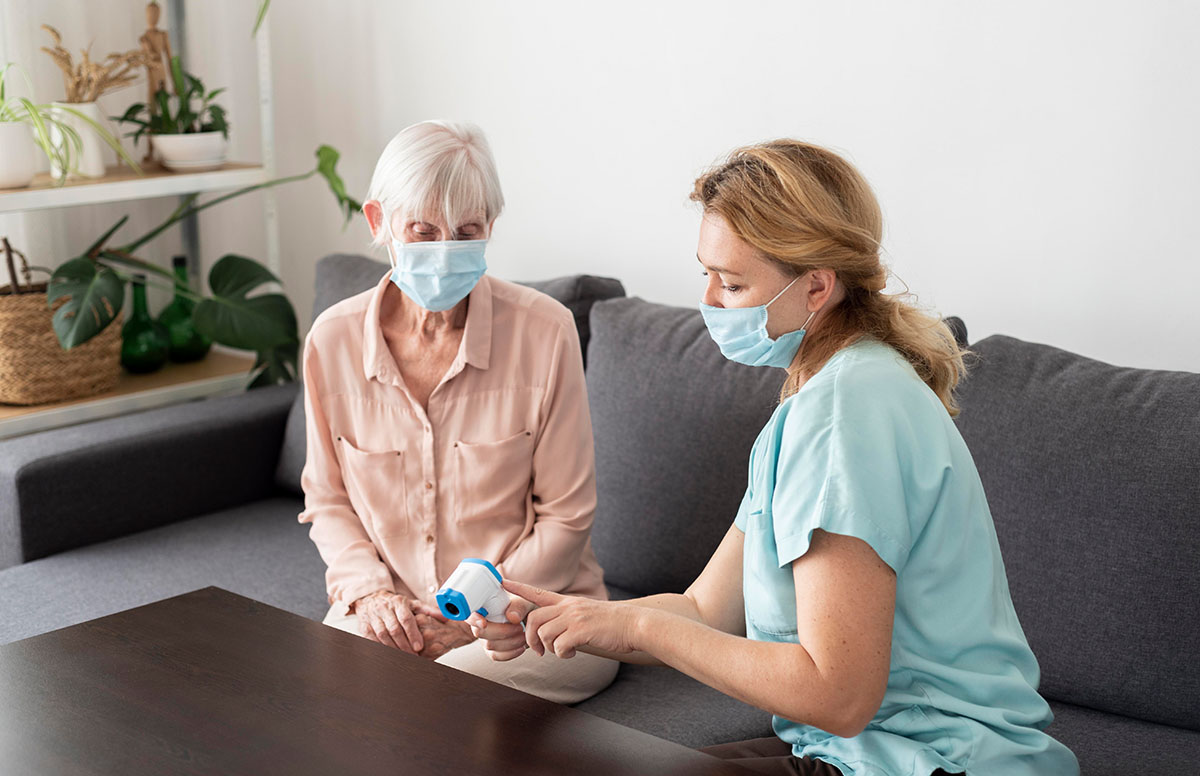CAST Offers New Primer on Infection Control Technologies
Infection control became an even-more pressing need during the pandemic. To support members in navigating technologies to keep residents healthy, LeadingAge CAST has released “Infection Control Technologies: A Primer and Provider Selection Guide.”
This white paper presents the range of infection control technologies available, their uses, and their benefits. It is one element of the new CAST Infection Control Technology Selection Tool, which helps aging services providers plan for, select, and implement an infection control solution. Learn more about the new tool in this issue of Tech Time.
Benefits of Infection Control Technologies
In the United States alone, more than 15,000 long-term care (LTC) facilities serve more than 1 million residents. The residents and staff in LTC facilities have an increased risk of infection due to the unique challenges in the care setting and the resident population. Infections increase health care costs and may lead to hospitalization. Infections associated with health care cause up to 380,000 deaths annually.
Having fewer infections increases quality of care and quality of life for residents and improves resident and family satisfaction. Reducing infections lowers operational and health care costs, reduces staff sick leave, and increases staff efficiencies and satisfaction. It improves public health and reporting capabilities, mitigates the community’s risks and liabilities, and improves the community’s reputation.
Types of Infection Control Technologies
Infection control technologies are varied and may include equipment such as cleaning chambers, robotic floor scrubbers, and ultraviolet (UV) technology. Air filtration and disinfection can be important elements of infection control. This white paper reviews several air solutions and concludes that advanced air purification technology (AAPT), an in-duct system, provides the most comprehensive air purification available.
Infection surveillance, control, and reporting software solutions are designed to help health care facilities track and control the spread of infectious diseases. Technology such as a digital sign-in/kiosk system can simplify the process of capturing health screening data to identify people who may be infected. Technology can also support contact tracing, to help providers identify people who may have been or are confirmed to have been exposed to an infectious disease.
Electronic Health Records (EHRs)/Electronic Medical Records (EMRs) can be used as decision-support tools, helping guide clinicians to make decisions to prevent facility-acquired infections (FAIs). EHRs/EMRs can also offer predictive modeling via machine learning, aiding clinicians and infection programs in targeting patients at greatest risk of developing an FAI.
Provider Business Models
The white paper presents long-term and post-acute care (LTPAC) provider business models that could support technology investments, such as grants and innovative funding vehicles. New care delivery and payment models through the Affordable Care Act (ACA) could enable LTPAC providers using certain technologies to derive revenues from strategic partners.
The white paper outlines how to calculate return on investment (ROI) of infection control technologies by considering the care/service delivery model, the payment/reimbursement model, the technology, and costs.
Planning for and Selecting Appropriate Infection Control Technology
Planning and choosing the technology that best fits each environment’s unique needs, and supports the organization’s overall infection control program and infrastructure, is crucial. Proactively assessing the needs of residents, staff, and family members is an important first step.
The white paper also walks readers through visioning, strategic planning, and assessing organizational readiness. Physical and IT infrastructure, available technology solutions, data availability and needs, interoperability/interfacing capability, resident/client and family needs, staff needs and competencies and availability, and partner assessments are important considerations.
To learn more, access “Infection Control Technologies: A Primer and Provider Selection Guide.”

Most Recommended
October 15, 2025
 Shutdown Week Three: Impact of Ongoing Closure on Affordable Housing
Shutdown Week Three: Impact of Ongoing Closure on Affordable Housing
December 10, 2025
Fiscal Year (FY) Funding 2026
October 07, 2025
Immigrant Workforce Matching Program Brings Workforce Relief
Recently Added
December 23, 2025
 CMS Debuts Models: ACCESS, ELEVATE and LEAD
CMS Debuts Models: ACCESS, ELEVATE and LEAD
December 22, 2025
GAO Report: Ensuring Accessible Healthcare
December 19, 2025
House Moves Forward on Affordable Housing Reforms
December 19, 2025



